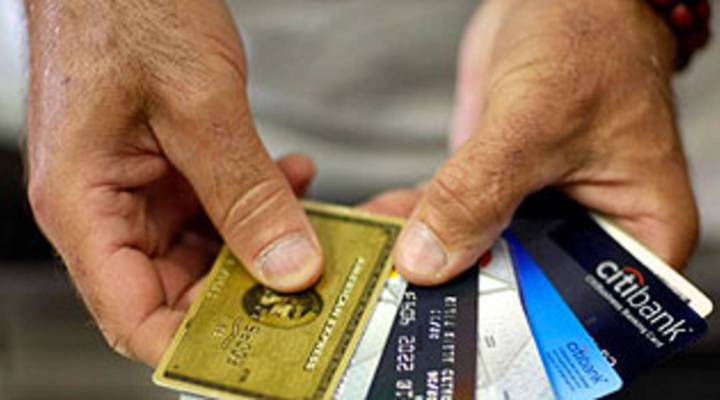
B of A lowers interest rates for some cardholders

Tess Vigeland: Here’s your double-take for the day: Interest rates on credit cards can actually go down. Yeah, you heard me. In fact, Bank of America cut the rates on roughly a million cards last month and other banks are expected to follow suit. Lucky customers? There’s a little more to it than that.
Here’s Marketplace’s Stacey Vanek Smith.
Stacey Vanek Smith: Millions of people saw their interest rates get jacked up and their credit limits slashed during the recession. To try and address that, Congress’ CARD Act said if a bank raises someone’s interest rate, it has to review that customer’s account after six months to see if that rate increase was “appropriate.”
Bill Hardekopf heads consumer credit website, LowCards.com.
Bill Hardekopf: There are a significant number of people with good credit scores that might have missed a payment or might have been late on a payment one time or two times. And all of a sudden, they had their interest rate go up from, say, 12, 13, 14 percent all the way up to 27, 28 percent.
Banks keep their calculations under wraps, but Hardekopf says if customers made on-time payments for six months and increased their credit score, their interest rate may have been cut in half.
Ron Shevlin: If I were a cardholder, I would not be holding my breath expecting a rate decline from my credit card issuer.
Ron Shevlin is a banking products analyst for the Aite Group.
Ron Shevlin: Although a million customers sounds like a lot, the best estimates I’ve seen put the total number of credit card customers that Bank of America has at about 60 million. So, in effect, about 2 percent of Bank of America customers saw an interest rate decline.
That means, of the more than 170 million credit cards in the U.S., interest rates would get cut on roughly three million cards. Shevlin expects only the very best card customers will see their rates drop, and best customer from a bank’s perspective is someone who doesn’t pay off the balance every month, but who does always make a payment and has excellent credit.
Still, even that small number of rate cuts is a sign that banks are loosening up, says Ben Woolsey with CreditCards.com. But it’s not just because of the CARD Act, that law doesn’t actually require banks to lower interest rates, just to review them. The reason banks are lower rates, he says, is because they want to hang on to their best customers.
Ben Woolsey: I think they’re really having to react to competitive pressures. If they don’t lower rates for consumers, they’re going to start losing market share.
Aite group’s Ron Shevlin says interest rates are generally set by two factors: One is the broader economy, market interest rates. The second factor is something the customer controls.
Shevlin: It’s very much driven by your credit score, and there are bands of credit scores that put you in a certain range.
Shevlin says that even though most people won’t see their interest rates go down, credit card regulations have prevented a lot of rate hikes that might have otherwise happened.
Shevlin: Had the CARD Act not been enacted, many more customers would most likely have seen increases in their interest rates on their credit cards.
Shevlin points to one provision of the the CARD Act, which prevents issuers from raising the interest rate on a credit card within the first year. That spelled the end of the once wildly popular teaser rate:
Commercial: Get a new Capital One card and all your purchases are interest free until May 2001.
In Los Angeles, I’m Stacey Vanek Smith for Marketplace Money.
There’s a lot happening in the world. Through it all, Marketplace is here for you.
You rely on Marketplace to break down the world’s events and tell you how it affects you in a fact-based, approachable way. We rely on your financial support to keep making that possible.
Your donation today powers the independent journalism that you rely on. For just $5/month, you can help sustain Marketplace so we can keep reporting on the things that matter to you.


















